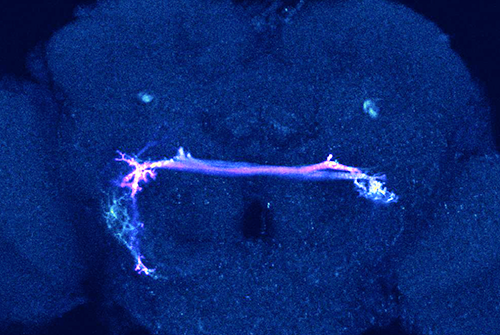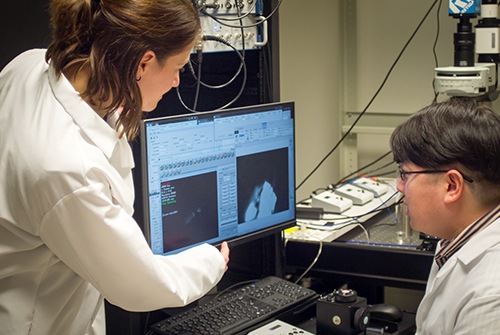Neural Circuit Engineering (NCE) Laboratory
Research Overview
At the NCE Lab, we use engineering tools and principles to uncover how nervous systems operate. Our research focuses on how sensory information is transformed into behavioral actions and how these transformations are altered in neurodevelopmental diseases and disorders.
We conduct our work primarily in the fruit fly (Drosophila melanogaster), which offers one of the most advanced genetic neuroengineering toolkits and a fully mapped wiring diagram of its 200,000-neuron nervous system. Flies perform complex sensorimotor transformations during locomotion and flight, making them an ideal model for controlled, reproducible experiments in a laboratory setting. Using the fruit fly model, we explore three key research areas:
-
Extracting Behaviorally Relevant Sensory Information:

The fruit fly’s visual system shares remarkable similarities with vertebrate visual processing, solving challenges in feature detection and motion perception, much like the human brain. We use direct neural recordings and computational modeling to understand how sensory information is encoded in the fly's visual system.
- Transforming Sensory Inputs into Motor Outputs:

How is encoded sensory information translated into movement? By leveraging the accessibility of the fly nervous system, we study how innate, conserved behaviors—such as collision-avoidance maneuvers—are generated. Our approach integrates whole-cell electrophysiology, connectomics, network analyses, behavioral assays, machine learning and modeling to uncover the neural computations behind these actions.
-
Neural Circuit Wiring:

The nervous system's wiring is an extraordinary feat. In the fruit fly brain alone, over 4,000 neuronal cell types must form precise connections, ensuring proper function. We investigate how these circuits develop and how miswiring in neurodevelopmental disorders alters sensory-motor computations.
At the NCE Lab, we are pushing the boundaries of neuroengineering, integrating cutting-edge techniques to reveal the fundamental principles governing nervous system function.




